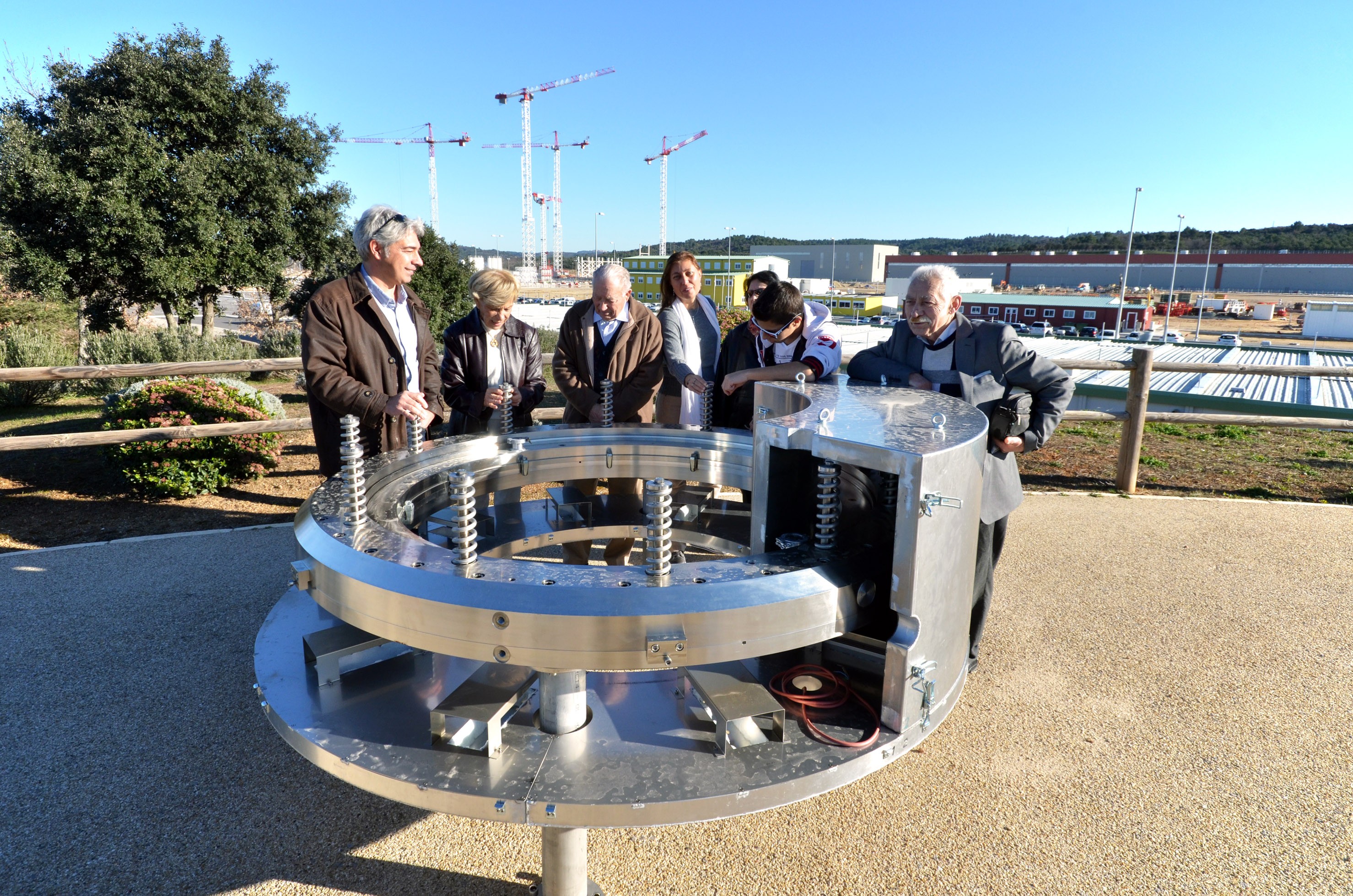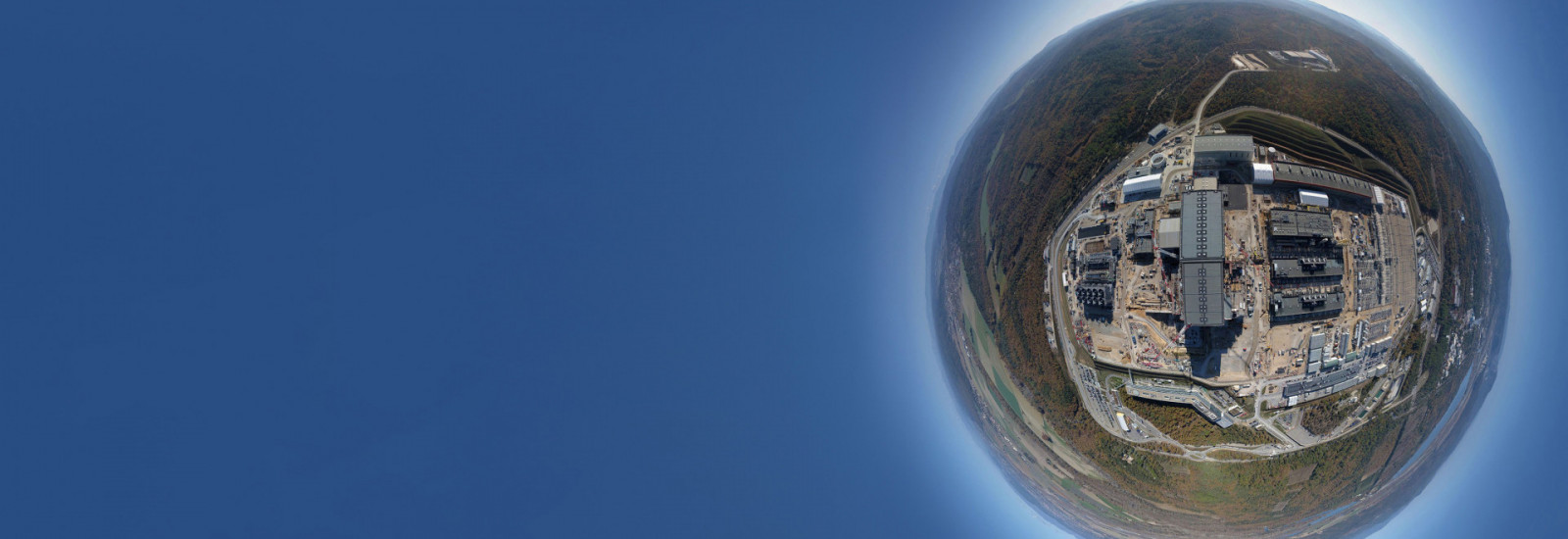Fusion energy is created when two atomic nuclei fuse together. According to Albert Einstein's famous formula E = mc2, the difference in mass between the two original nuclei and the resulting fusion nucleus is released as energy. This involves unimaginably large amounts of energy: the conversion of one gram of deuterium-tritium mixture to helium would produce a thermal energy of about 100 megawatt-hours. In comparison, to generate this amount of energy from hard coal, you would have to burn more than 12 tons of coal! Even better, the required amount of hydrogen is a virtually inexhaustible here on Earth, and the residues from nuclear fusion are chemically completely harmless, unlike the environmentally harmful greenhouse gases produced when fossil fuels are burned. No wonder, then, that researchers have been dreaming of tapping into this miraculous energy source for over a century.
In Cadarache, a small village in the south of France, this dream seems to be within reach. It is home to the ITER project, a research collaboration of 35 industrialized countries with the ambitious goal of generating energy through controlled nuclear fusion. To this end, an experimental tokamak fusion reactor is currently being built to test the possibility of using fusion energy on a permanent basis starting in 2025. In the reactor, nuclear fusion is generated with the help of a deuterium-tritium plasma that is focused by extremely strong magnetic fields and then fused. Sounds simple enough, but in practice it is incredibly complicated. For example, a temperature of 150 million degrees Celsius must prevail in the plasma (10 times hotter than the core of the sun) for nuclear fusion to begin. The reactor must also be hermetically sealed under ultra-high vacuum conditions.
This is where the Swiss valve specialist company VAT, world market leader for high-performance vacuum valves and exclusive ITER development partner for the past several years, comes into play. Highly specialized valves have been developed for the ITER project to withstand the extreme temperature and radiation conditions around the tokamak reactor. This allows the ITER developers and their external partners to conveniently select all the valves needed for the development of a specific module from the ITER-specified catalog – safe in the knowledge of complete compatibility and the highest possible level of safety.
Most ITER valves are all-metal valves that use special metal-on-metal seals (VATRING) instead of elastomers. In their pneumatic valve actuators, special O-rings, which are more radiation-resistant than conventional elastomer seals, are also used. VAT are eagerly waiting to see how the valves will prove themselves in long-term use under such extreme conditions. "For the VAT team, the ITER developments are of very special importance because we have to test the limits of what is technically feasible here," explains Phil Schneider, the product manager responsible for the all-metal valves at VAT. Already, the ITER cooperation has provided the Swiss valve professionals at VAT with countless valuable insights relating to valve development.

In the ITER reactor, two very powerful neutral beam injectors are used to heat the plasma to fusion temperatures. A third neutral beam injector is used to diagnose the plasma. Each injector forms a vacuum chamber that must be capable of being vented independently of the tokamak in the event of a failure (e.g., fire, earthquake, pressure rise, or coolant leak). In the search for a valve solution suitable for these purposes, attention was soon focused on the innovative VATRING technology – a sealing technology developed by VAT for all-metal valves for repeated hermetic closure under UHV conditions. Initially, there were some doubts as to whether this technology could be scaled up to ITER requirements, but this naturally sparked the ambition of the VAT developers: as part of a feasibility study, they developed the Absolute Valve DN1600, which not only meets all ITER specifications but, with an opening diameter of 1.6 meters, is also the largest all-metal valve ever developed!
Stainless steel seals with silver coatings are installed in the valve, ensuring high vacuum tightness up to a pressure gradient of 0.2 MPa / 2 bar across the valve disc, with a simultaneous leakage rate of less than 10-7 mbar liter/s. The test prototype of this magnificent valve seal now has a place of honor on a hill near the ITER construction site and is a popular point of interest for all visitors to the site.
The incredible potential of the ITER reactor was demonstrated once again when, in February 2022, researchers from the European fusion project JET - the direct predecessor project to ITER - reported that they had succeeded in producing an energy of 59 megajoules with a deuterium-tritium plasma - almost four times as much as an earlier energy record from 1997. Admittedly, the output of the JET fusion reactor is still well below the so-called breakeven point, above which more energy is produced by nuclear fusion than is needed to heat the plasma. But the generation of this high-energy fusion plasma, stable for more than seconds, is considered an important test for the ITER fusion reactor - which is expected to cross the breakeven threshold for the first time. Since both the JET and ITER reactors rely on a deuterium-tritium mixture as plasma, researchers can draw important conclusions from the record-breaking experiment with regard to the optimal plasma parameters in order to then implement experiments with much higher-energy fusion plasmas in the ITER reactor.
